- ارسال 24 ساعته در تهران
- ارسال به شهرستان در 2 تا 4 روز کاری
- بسته بندی ایمن
- گارانتی بازگشت کالا
- پشتبیانی 7 روز و 24 ساعته
کتاب Innere Medizin der Kleintiere
توضیح کوتاه در رابطه با محتوای کتاب:
اطلاعات کتاب:
| زبان کتاب |
المانی |
|---|---|
| شابک |
978-3437570421 |
| نوع جلد |
شومیز |
1,600,000 تومان قیمت اصلی 1,600,000 تومان بود.950,000 تومانقیمت فعلی 950,000 تومان است.
فرق چاپ دیجیتال با افست چیست؟
چاپ دیجیتال بیشتر برای تیراژ پایین و چاپ سریع بهکار میرود. در این روش، فایل مستقیماً از کامپیوتر روی دستگاه چاپ منتقل میشود و برای چاپ چند جلد کتاب یا نمونه اولیه بسیار مناسب است.
اما چاپ افست برای تیراژ بالا استفاده میشود و کیفیت رنگ و جزئیات در آن بسیار بالاتر است. در چاپ افست ابتدا زینک تهیه میشود و سپس طرح روی کاغذ منتقل میگردد. این روش برای چاپهای حرفهای و اقتصادی در تعداد زیاد کاربرد دارد.
تفاوت قطع وزیری و رحلی در کتاب چیست؟
قطع وزیری یکی از رایجترین اندازههای کتاب است و ابعادی حدود ۲۴ در ۱۷ سانتیمتر دارد. این نوع قطع برای کتابهای درسی، دانشگاهی و آموزشی بسیار پرکاربرد است.
اما قطع رحلی بزرگتر بوده و معمولاً اندازه آن ۲۹ در ۲۱ سانتیمتر یا حتی بیشتر است. این قطع برای کتابهای تصویری، زبان، فرهنگ لغت و کتابهای آموزشی با جزئیات زیاد استفاده میشود تا خوانایی و فضای صفحه بیشتر باشد.
تفاوت جلد سخت و جلد نرم چیست؟
کتاب با جلد سخت (Hardcover) دارای رویهای محکم از جنس مقوای ضخیم یا گالینگور است که با روکش سلفون یا پارچه پوشانده میشود. این نوع جلد دوام بسیار بالایی دارد و برای کتابهای نفیس، مرجع یا هدیهای انتخاب میشود.
در مقابل، جلد نرم (Paperback) از مقوای نازکتر ساخته شده و سبکتر و اقتصادیتر است. بیشتر کتابهای آموزشی و رمانها با جلد نرم چاپ میشوند.
تفاوت کاغذ تحریر، بالک و گلاسه چیست؟
کاغذ تحریر (Wood-free Paper)
کاغذ تحریر متداولترین نوع در چاپ کتاب است. رنگی سفید و سطحی مات دارد که باعث میشود چشم هنگام مطالعه خسته نشود.
این نوع کاغذ برای کتابهای درسی، دانشگاهی، آموزشی و رمانها بسیار مناسب است.
ویژگیها:
- رنگ سفید و طبیعی
- ضخامت و استحکام مناسب
- جذب خوب جوهر چاپ
- مناسب برای نوشتن و یادداشتبرداری
کاغذ بالک (Book Paper / Bulky Paper)
کاغذ بالک کمی ضخیمتر و سبکتر از کاغذ تحریر است و معمولاً رنگ آن کرم یا نخودی است.
در نتیجه هنگام مطالعه، نور کمتری منعکس میشود و چشم کمتر خسته میشود. به همین دلیل در کتابهای حجیم مثل رمانهای طولانی یا منابع آموزشی پرصفحه، بسیار محبوب است.
ویژگیها:
- رنگ گرم (کرم یا نخودی)
- سبکتر از تحریر
- حس طبیعیتر هنگام ورق زدن
- مناسب برای مطالعه طولانیمدت
کاغذ تحریر (Wood-free Paper)
کاغذ گلاسه سطحی براق و صاف دارد که رنگها را بسیار زنده و درخشان نمایش میدهد.
این نوع کاغذ بیشتر برای کتابهای تصویری، کاتالوگها، مجلات رنگی و کتابهای آموزشی تصویردار استفاده میشود.
ویژگیها:
- سطح براق و صاف
- نمایش شفاف رنگها
- وزن نسبتاً بالا
- مناسب برای چاپ تصاویر باکیفیت
- ارسال 24 ساعته در تهران
- ارسال به شهرستان در 2 تا 4 روز کاری
- بسته بندی ایمن
- گارانتی بازگشت کالا
- پشتبیانی 7 روز و 24 ساعته
کتاب Innere Medizin der Kleintiere
کتاب Innere Medizin der Kleintiere ، بهترین منبع برای داروهای داخلی حیوانات کوچک به زبان آلمانی.
پیرامون زبان آلمانی
زبان آلمانی یک زبان طبیعی از خانواده زبانی زبانهای هندواروپایی از شاخهٔ زبانهای ژرمنی غربی است که بیشتر در اروپای مرکزی گفتگو میشود. آلمانی در آلمان، اتریش، سوئیس، تیرول جنوبی، جامعهٔ آلمانیزبان بلژیک و لیختناشتاین پرگویشورترین زبان و رسمی است.کتاب Innere Medizin der Kleintiere
این زبان همچنین یکی از زبانهای رسمی لوکزامبورگ و استان اوپوله لهستان نیز بهشمار میرود. آلمانی بیشترین شباهت را با سایر زبانهای ژرمنی غربی، از جمله انگلیسی، آفریکانس، هلندی، فریسی، آلمانی سفلی، لوکزامبورگی، اسکاتس و ییدیش دارد. آلمانی همچنین شباهتهای واژگانی بسیاری با زبانهای دانمارکی، نروژی و سوئدی از گروه ژرمنی شمالی، دارد. آلمانی پس از انگلیسی دومین زبان ژرمنی پرگویشور است.کتاب Innere Medizin der Kleintiere
آلمانی با داشتن تقریباً ۱۰۰ میلیون گویشور بومی در سراسر جهان، یکی از زبانهای بزرگ جهان و پرگویشورترین زبان مادری در اتحادیه اروپا است. آلمانی همچنین پس از انگلیسی و فرانسوی سومین زبان خارجی و از نظر گویشوران کل، دومین زبان بزرگ در اتحادیهٔ اروپا است.کتاب Innere Medizin der Kleintiere
آلمانی از نظر آموزش پس از انگلیسی پرکاربردترین زبان خارجی در دبستانها و پس از انگلیسی و فرانسوی پرکاربردترین زبان خارجی در دبیرستانهای اتحادیهٔ اروپا و پس از اسپانیایی، فرانسوی و زبان اشارهٔ آمریکایی چهارمین زبان غیرانگلیسی در ایالات متحده است. این زبان همچنین دومین زبان علمی پرکاربرد و پس از انگلیسی و روسی سومین زبان پرکاربرد در وبسایتها است.کتاب Innere Medizin der Kleintiere
یک دهم کتابها در جهان (شامل کتابهای الکترونیکی) به زبان آلمانی منتشر میشوند و کشورهای آلمانیزبان از نظر انتشار سالانهٔ کتابهای جدید، در رتبه پنجم قرار دارند. در انگلستان، در کسبوکارها آلمانی و فرانسوی پرمتقاضیترین زبانهای خارجی هستند (به ترتیب ۴۹٪ و ۵۰٪ مشاغل این دو زبان را پرکاربردترین زبانها میدانند).
آلمانی زبانی اشتقاقی است که دارای چهار حالت برای اسم، ضمیر و صفت (نهادی، مفعولی، وابستگی، برایی)؛ سه جنس (مردانه، زنانه، خنثی) و دو شمار (مفرد، جمع) است. آلمانی دارای فعلهای قوی و ضعیف است. بیشتر واژگان این زبان از شاخهٔ ژرمنی باستان، خانوادهٔ زبانهای هندواروپایی میآیند. بخش دیگری از واژگان آن بیشتر از لاتین و یونانی و تا حد کمتری از فرانسوی و انگلیسی نو گرفته شدهاند. آلمانی یک زبان چندکانونی است و گونههای معیار آن شامل آلمانی، اتریشی و سوئیسی هستند.کتاب Innere Medizin der Kleintiere
این زبان همچنین دارای طیف گستردهای از گویشها و گونههای مختلف در سراسر اروپا و سایر نقاط جهان است. ایتالیا تمام اقلیتهای آلمانیزبان در قلمرو خود را به عنوان اقلیتهای ملی تاریخی به رسمیت میشناسد و از گونههای آلمانی که در چندین منطقه در شمال ایتالیا علاوه بر تیرول جنوبی صحبت میشوند، محافظت میکند.
به دلیل فهم متقابل کم میان گونههای خاصی از آلمانی و آلمانی معیار و همچنین عدم وجود تمایز علمی و بدون اختلاف میان «گویش» و «زبان»، برخی از گونههای آلمانی یا گروههای گویشی (به عنوان مثال آلمانی سفلی یا پلاتدیچ) را میتوان به عنوان «زبان» یا «گویش» توصیف کرد.
کتاب Innere Medizin der Kleintiere
About the German language
German is a natural language of the Indo-European language family of the West Germanic branch, spoken mostly in Central Europe. German is the most widely .spoken and official language in Germany, Austria, Switzerland, South Tyrol, the German-speaking community of Belgium and Liechtensteinکتاب Innere Medizin der Kleintiere.
It is also one of the official languages of Luxembourg and the Polish province of Opole. German is most similar to other West Germanic languages, including English, Afrikaans, Dutch, Frisian, Low German, Luxembourgish, Scots and Yiddish. German also has many lexical similarities to the Danish, Norwegian and Swedish languages of the North German group. German is the second most spoken German language after English.
German is one of the largest languages in the world and the most widely spoken mother tongue in the European Union, with almost 100 million native speakers worldwide. German is also the third largest foreign language after English and French and the second largest language in the European Union in terms of total .speakersکتاب Innere Medizin der Kleintiere.
German is the second most widely used foreign language in primary schools after English, after English and French the most widely used foreign language in EU high schools, and the fourth most non-English language in the United States after Spanish, French and American Sign Language. It is also the second most widely used scientific language and the third most widely used language on websites after English and Russian.
One tenth of the books in the world (including e-books) are published in German, and the German-speaking countries are ranked fifth in terms of the annual publication of new books. In the UK, German and French are the most popular foreign languages in business (49% and 50% of businesses consider these two .languages to be the most widely used languages)کتاب Innere Medizin der Kleintiere.
German is a derivative language that has four modes for nouns, pronouns and adjectives (institutional, object, dependency, for); There are three genders (male, female, neutral) and two numbers (singular, plural). German has strong and weak verbs. Most of the words in this language come from the ancient Germanic branch of the Indo-European language family. Other parts of the vocabulary are borrowed from Latin and Greek, and to a lesser extent from French and modern English. German is a multicenter language and its standard variants include German, Austrian and Swiss.
It also has a wide range of different dialects and species throughout Europe and the rest of the world. Italy recognizes all German-speaking minorities in its territory .as historical national minorities and protects Germanic species spoken in several regions of northern Italy in addition to South Tyrolکتاب Innere Medizin der Kleintiere.
Due to the lack of mutual understanding between certain types of German and standard German, as well as the lack of scientific distinction without distinction between “dialect” and “language”, some Germanic species or groups of dialects (eg Lower German or Platodich) can be Described the title “language” or “dialect”.
| زبان کتاب |
المانی |
|---|---|
| شابک |
978-3437570421 |
| نوع جلد |
شومیز |
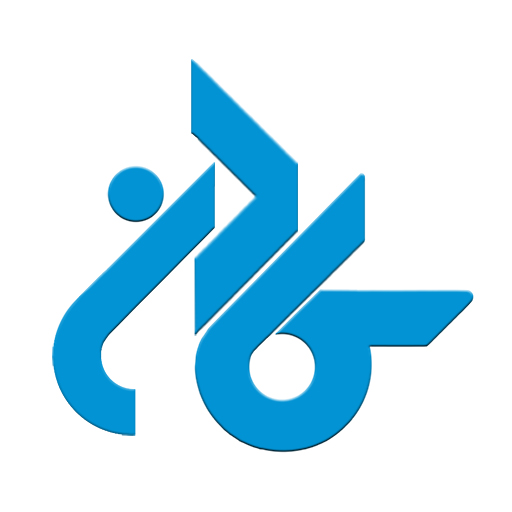




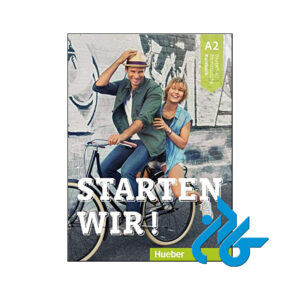


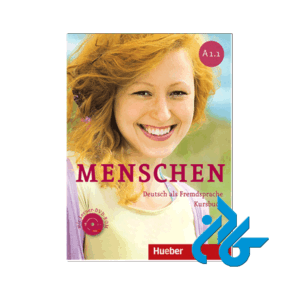
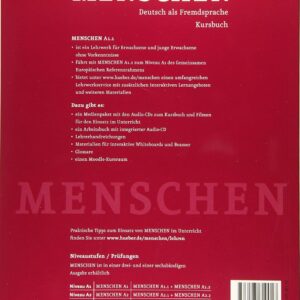
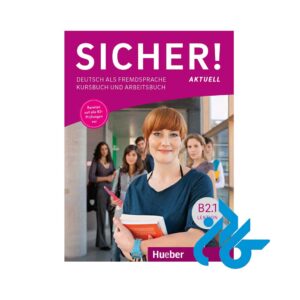
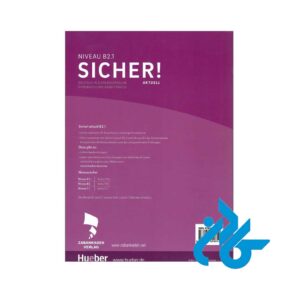
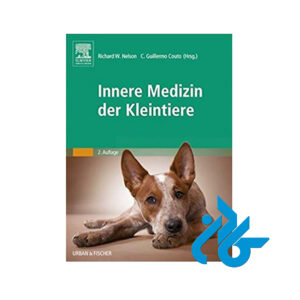
نقد و بررسیها
پاککردن فیلترهاهنوز بررسیای ثبت نشده است.